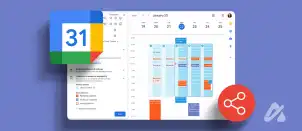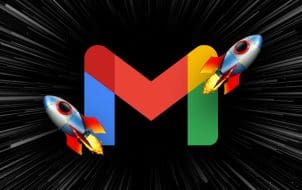Most people have a Google account these days. Google provides free email services, document creators, and even phone numbers. It’s for this reason that Gmail can become a hot target for hackers and interlopers.
How can you tell, for instance, if someone else has been using your Gmail account? In this article, we will explain everything and show you how to protect yourself online.
How to Spot Suspicious Gmail Activity
Before we dive into our tutorials, let’s do a brief overview of suspicious activity. Google does an excellent job of helping users protect their accounts. More often than not, there’s no reason to panic. But here are some signs that someone else is accessing your Gmail account:
- You received authentication codes (these code can come in texts, emails, and device notifications).
- Your Sent email folder contains messages that you didn’t compose.
- Contact information or other account details are changed.
- You’ve stopped receiving emails.
- Others tell you they’ve received suspicious emails from you.
- You can’t log into your Gmail account and you’re using the correct username and password.
While you probably do your best to keep your account secure, there’s always a chance that someone else is accessing it. If you have suspicions that someone else is using your account, don’t worry. There are a few things you can do to confirm your suspicions.
How to Check Login Activity
The best place to start is your Gmail activity logs. These logs will show you exactly which devices are accessing your Gmail account. Here’s how to find the devices:
- Open a web browser and visit your Google Activity page. Click Go to Google Account in the upper right corner.

- Sign into your account. Note: If you can’t sign in because the hacker changed your login credentials, click the Forgot Password link or follow the steps in this article.

- After successfully logging in, click on Security.

- Scroll down the page and click on Manage Devices under the Your Devices heading.

- Now, you can see a complete list of every device logged into your account.

Suppose you see a device that you don’t recognize. You can easily sign out on that device by following these steps:
- Locate the device and tap the three vertical dots in the right corner.

- Click on Don’t recognize this device?

- Confirm that you’d like to sign out of the device.

- When you see a device you don’t recognize, it’s a good idea to change your password too.

Checking your login activity will show you if someone logged into your Gmail account on their device.
How to Check Recent Activity
Aside from checking devices, you can also see any recent activity with the IP address, and web browser used. Here’s how to see your recent activity:
- Open your favorite web browser and sign into your Gmail account.

- Scroll down to the bottom and click on the small Details hyperlink.

- A new window will appear. Here, you will see the Access Type, IP Address, Approximate location, and Time/Date stamp.

Pro Tip: If you don’t know your IP Address, you can Google “What’s my IP Address,” and it should appear in the search results.
If you want to know more, you can also choose the “Security Checkup” option that will prompt you to another window. There, you’ll have the opportunity to inspect all the details regarding your Gmail security.
Also, keep in mind that Gmail will display your concurrent session information. But don’t be alarmed if it doesn’t register it right away. This can often take a few minutes.
Security Measures
After you’ve confirmed that someone is accessing your Gmail account, you need to take some security steps to rectify the situation. Unauthorized access to your Gmail account can cause various problems. This section will walk you through a few steps to secure your account, from exposing your computer to malware to other account hacks.
First, you can always check if Google found any suspicious recent activity and handled the issue for you. Just go to the “Security” option under “Manage your Google Account” and then select the “Recent Security Activity” option.

Change Your Password
You can change your Gmail account password using your computer or mobile device. Google will always ask you for more information because they encourage you to apply the 2-Step Verification Process to make your account safer.
That means you’ll also give them another email address and/or your phone number. The verification process will then send you a sign-in code via SMS. But let’s see how you can change your Gmail password:
- Navigate again to the “Manage your Google Account” option.
- Toggle the Security tab and then select “Password.”
- Google will ask you to sign in using your current password first.
- And then you can enter your new password twice, for confirmation.

Gmail will remind you to use at least eight characters and not anything too obvious.
Also, it’s prudent to avoid using a password you already have on another email or website. A combination of numbers and letters is highly advised too.
Run Antivirus
The final step is to run an antivirus scan on your device. The scan might reveal that you’ve had a virus all along. And that it was to blame for all the unusual and suspicious activity on your Gmail account.
The software will perform the scan, find the viruses, and help you delete them safely. And then, you can go on using your Gmail account without worrying about malware.
Frequently Asked Questions
Here are some more answers to your questions about suspicious Gmail activity.
Can I log out of devices on the Gmail mobile app?
Yes! Having a web browser handy makes things simpler, but if you’re stuck using the mobile app, you can sign out of devices by following these steps:
1. Open the Gmail app. Click on the menu option located at the top left corner of the screen.
2. Scroll down to Settings.
3. Tap on the Gmail account you want to check.
4. Tap Manage Your Google Account.
5. Select the Security option.
6. Select View Devices.
7. Tap on the device you’d like to log out. Then, tap the three-dot icon just as we did above to remove the device.
Final Thought
It can be stressful, worrying about whether or not someone else is using your Gmail Account. After all, that’s usually where all important emails are stored. And often sensitive information regarding your work or personal life.
It’s concerning to think that someone else can have access to that without your permission. That’s why it’s wise to know how to check recent activity and sign out of unrecognized devices. And, as Google will often remind you, make sure that your password is bulletproof.
Have you ever noticed any suspicious activity on Gmail? Let us know in the comments section below.
Disclaimer: Some pages on this site may include an affiliate link. This does not effect our editorial in any way.
















